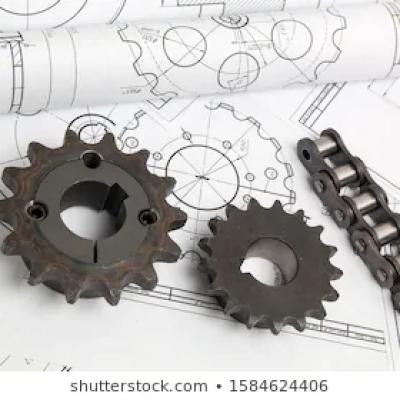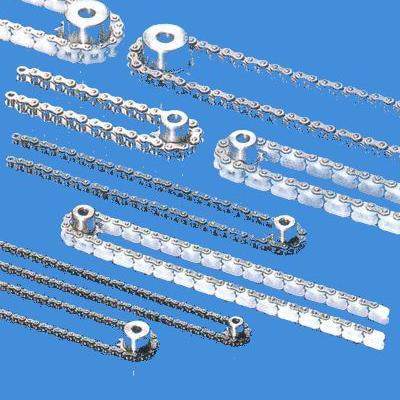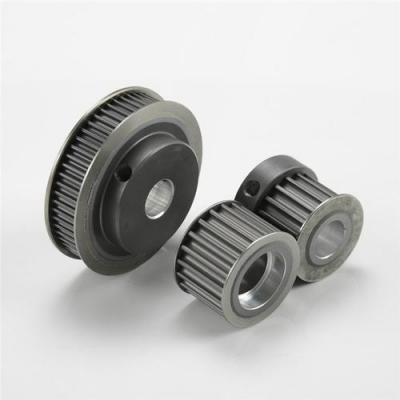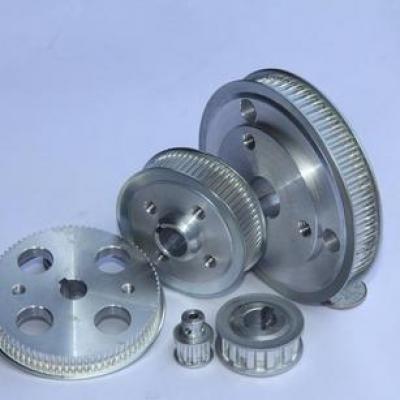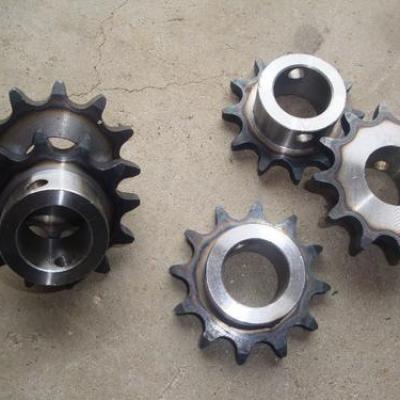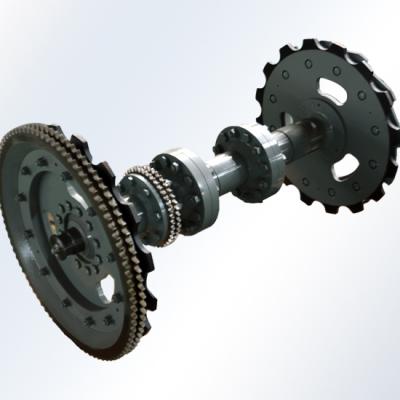Synchronous pulley and shaft connection
According to the material and use of the synchronous pulley, the pulley should be installed on the shaft by an appropriate connection method. There are several types as follows
1. Key connection
Keyway connection
The key connection is used to fix the pulley to the shaft, which is the most widely used connection method for materials such as steel and cast iron. The stress on the contact surface between the wheel keyway and the key exceeds the allowable stress of the aluminum alloy material.
1) The role of key connection
The key connection is to realize the axial fixation between the shaft and the parts on the shaft through the key to transmit motion and torque. Among them, some types can also achieve axial fixation and transmission of axial force, and some types can also achieve axial dynamic coupling.
In the key connection assembly, the key (generally made of 45-gauge steel) is a mechanical part used to connect the parts on the shaft and fix them in the circumferential direction to achieve torque transmission. The connection types include loose key connection, general key connection and tight key connection.
2) Key points of assembly process
(1) Before assembly, check the straightness of the key, the symmetry and parallelism of the keyway to the axis.
(2) There is usually a gap between the two sides of the common flat key and the shaft keyway. During heavy load, impact and bidirectional use, there must be interference. The arcs at both ends of the key should be free of interference. There should be a gap of 0.1mm between the key end and the shaft groove.
(3) The bottom surface of the ordinary flat key and the bottom surface of the key slot should be firm.
(4) The radius of the semi-circular key should be slightly smaller than the radius of the shaft groove, and other requirements are the same as the general flat key.
3) Application of key connection
The key is used to connect the shaft and the parts on the shaft for circumferential fixing to transmit torque, such as the connection of Gears, pulleys, couplings and the shaft. The key connection can be divided into loose key connection, tight key connection and spline connection Category
Second, the expansion sleeve connection
Tightening coupling sleeve
When the small gap between the key and the key groove has an impact on the use and the transmission device requires high positioning accuracy or the phase is consistent, GAIGI Gage pulleys and shafts are mostly connected by expansion sleeves. When using this connection method, the specifications of the expansion sleeve should be selected according to the torque transmitted by the belt and the pressure of the expansion connection surface should be calculated.
advantage:
1) The use of expansion sleeves makes the manufacture and installation of host parts simple. The processing of the shaft and the hole to install the expansion sleeve does not require high-precision manufacturing tolerances as with interference fit. There is no need to heat, cool or pressurize the installation of the expansion sleeve, just tighten the bolts to the required torque. Moreover, the adjustment is convenient, and the hub can be conveniently adjusted to the desired position on the shaft. Expansion sleeves can also be used to connect parts with poor weldability.
2) The service life of the expansion sleeve is long and the strength is high. Expansion sleeves rely on friction transmission, without weakening the keyway of the connected parts, nor relative movement, and will not wear out during work.
3) When the expansion sleeve is overloaded, it will lose the coupling effect and protect the equipment from damage. 4 Expansion sleeve coupling can withstand multiple loads, and its structure can be made into a variety of styles. Depending on the installation load, multiple expansion sleeves can also be used in series.
4) The expansion sleeve is easy to disassemble and has good interchangeability. Since the expansion sleeve can combine the shaft hub with a large matching clearance, loosen the bolts during disassembly, so that the connected parts can be easily disassembled. When swollen, the contact surface is tightly bonded without corrosion, and it is also easy to disassemble.
3. Cone sleeve fastening
Unique structure, easy to install and remove the pulley
The inner hole of the hub is also processed into a cone with the taper of the bush. The hub and bushing are tapered and fastened with bolts, and the bushing is connected to the shaft with a key. In this way, three coupling holes can be seen on the coupling end face of the pulley, bushing and shaft. Two of them are assembly holes. The assembly holes consist of half threaded holes on the hub and half light holes on the bushing. The other is the lead-out hole for removing the timing belt wheel. This hole consists of half of the light hole on the hub and half of the threaded hole on the bush. The thread length of the connecting bolt is slightly longer than the depth of the light hole. After the bolt is fully screwed into the light hole, then continue to tighten the bolt, the bolt will pull the pulley and the bush to closely fit, and generate sufficient friction to transmit torque . The bush of this structure has a narrow groove in the axial direction, and the inner diameter of the bush is also designed to be slightly smaller than the shaft diameter. During installation, the slight deformation of the narrow groove of the bush can be used to install the pulley more easily. At the same time, after the bushing is connected with the hub, the inner hole deformation caused by the narrow groove will cause a small change in the inner diameter of the bushing, so that there is a certain amount of interference between the bushing and the shaft to ensure accurate torque transmission.
4. Other connection methods
Small-sized pulleys and resin pulleys and shafts that transmit less load can be connected and positioned using D-shaped shafts, pins, set screws, and elastic retaining rings as shown in c, d, and e in the figure above.
